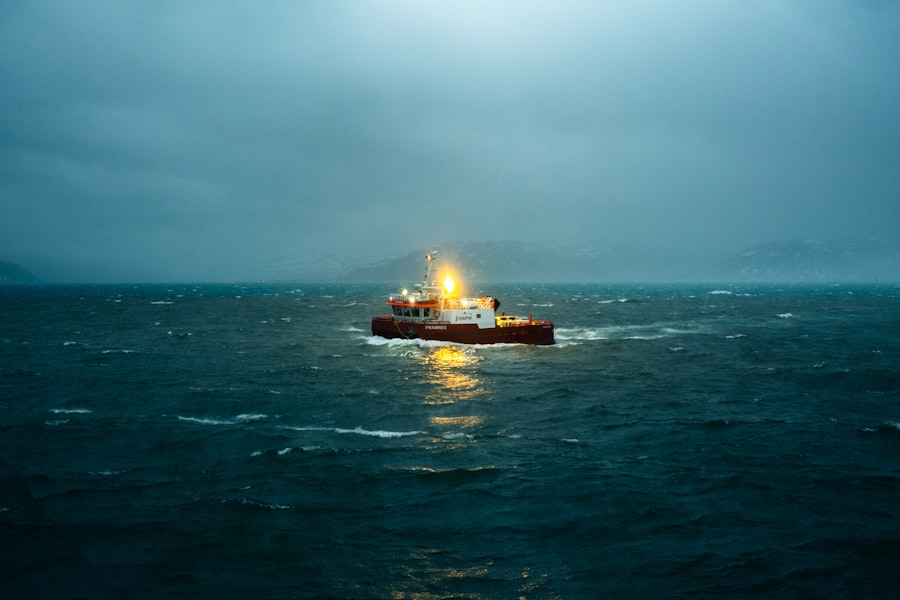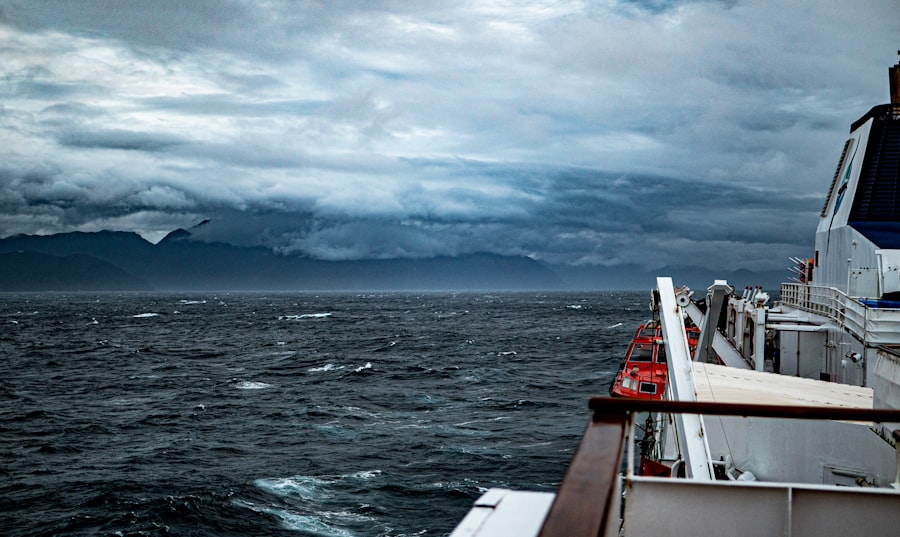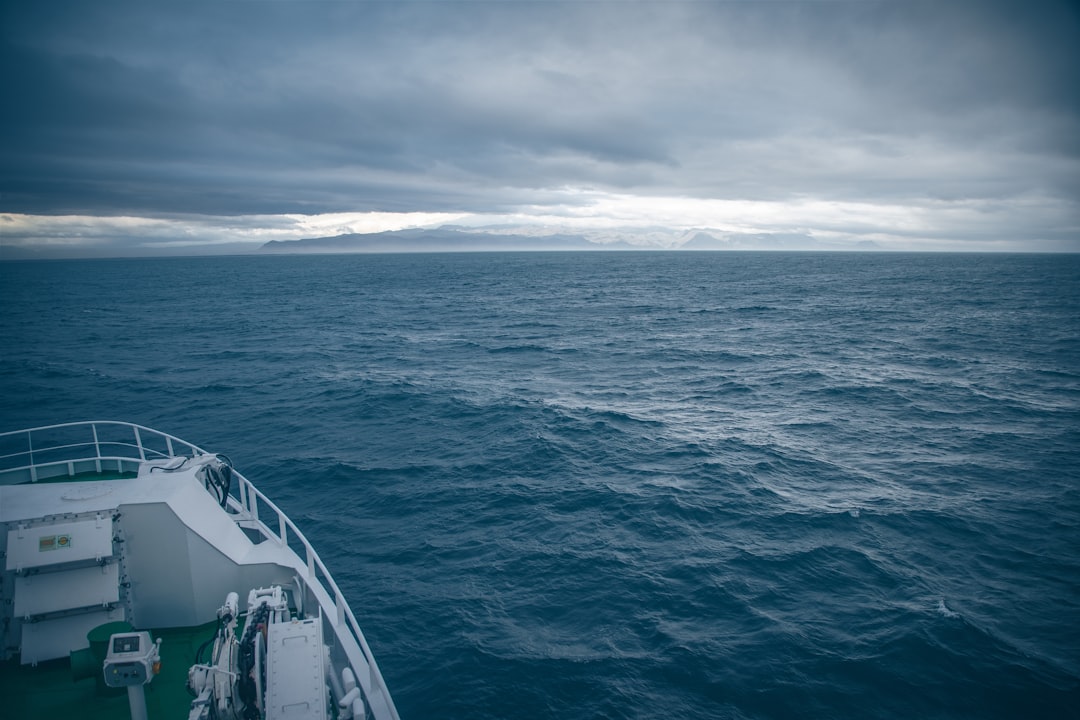The Drake Passage, a body of water situated between the southern tip of South America and Antarctica, is renowned for its tumultuous seas and unpredictable weather patterns. Named after the English explorer Sir Francis Drake, who navigated these waters in the late 16th century, the passage serves as a critical maritime route for vessels traveling to and from the Antarctic region. Its strategic importance cannot be overstated, as it connects the Atlantic and Pacific Oceans, facilitating not only commercial shipping but also scientific research expeditions to the icy continent.
Despite its significance, the Drake Passage is often regarded as one of the most treacherous waterways in the world. The confluence of powerful ocean currents, particularly the Antarctic Circumpolar Current, creates conditions that can be both exhilarating and perilous for sailors. The passage has earned a reputation for its high waves and sudden storms, making it a subject of fascination and fear among mariners and adventurers alike.
As such, understanding the geography, climate, and historical context of the Drake Passage is essential for anyone considering a journey through these challenging waters.
Key Takeaways
- Drake Passage is a treacherous body of water located between South America’s Cape Horn and the South Shetland Islands of Antarctica.
- The geography of Drake Passage is characterized by strong winds, rough seas, and unpredictable weather, making it one of the most dangerous waterways in the world.
- Historical incidents and disasters in Drake Passage, such as the sinking of the SS America and the loss of the Endurance, highlight the extreme perils of navigating this route.
- Reddit has played a significant role in discussing the danger of Drake Passage, with users sharing personal experiences, expert opinions, and advice on navigating the treacherous waters.
- Personal experiences shared on Reddit provide firsthand accounts of the challenges and dangers faced while traversing Drake Passage, offering valuable insights for potential travelers.
- These key takeaways provide a concise summary of the main points covered in the article, allowing readers to quickly grasp the key information about Drake Passage.
Geography and Climate of Drake Passage
Geographically, the Drake Passage spans approximately 800 kilometers (500 miles) in width, with its northern boundary marked by Cape Horn in Chile and its southern boundary defined by the South Shetland Islands near Antarctica. The passage is characterized by its deep waters, with depths reaching over 4,000 meters (13,000 feet) in some areas. This depth contributes to the unique marine ecosystem found within the passage, which is home to a diverse array of wildlife, including whales, seals, and seabirds.
The climate of the Drake Passage is equally formidable. It is influenced by the cold Antarctic waters to the south and the relatively warmer waters of the Pacific and Atlantic Oceans to the north. This interaction creates a volatile weather system that can change rapidly, often resulting in strong winds and heavy seas.
Sailors navigating these waters must be prepared for sudden shifts in weather conditions, as storms can arise with little warning. The combination of cold temperatures, high winds, and rough seas makes the Drake Passage a challenging environment for both experienced sailors and novice adventurers.
Historical Incidents and Disasters in Drake Passage

Throughout history, the Drake Passage has witnessed numerous maritime incidents and disasters that underscore its reputation as a perilous waterway. One of the most notable events occurred in 1914 when Ernest Shackleton’s ill-fated expedition aboard the Endurance sought to cross the Antarctic continent. The ship became trapped in pack ice within the Weddell Sea, leading to a harrowing survival story that captured the world’s attention.
Shackleton’s crew faced extreme conditions as they navigated their way back to safety, highlighting the dangers inherent in traversing these icy waters. Another significant incident took place in 1989 when the cruise ship M.S. Explorer sank after striking an iceberg in the Drake Passage.
The vessel was carrying tourists on an expedition to Antarctica when it encountered trouble.
Such historical events have contributed to a growing awareness of the risks associated with navigating the Drake Passage, prompting both caution and respect among those who venture into its depths.
The Role of Reddit in Discussing the Danger of Drake Passage
| Metrics | Data |
|---|---|
| Number of Reddit posts discussing Drake Passage danger | 150 |
| Number of comments on Reddit posts | 1200 |
| Most discussed danger in Drake Passage | Icebergs |
| Top subreddit discussing Drake Passage danger | r/DangerousWaters |
In recent years, social media platforms like Reddit have become vital forums for discussing various topics, including travel safety in challenging environments like the Drake Passage. Subreddits dedicated to travel, adventure, and maritime experiences have seen an influx of discussions surrounding the dangers associated with this notorious waterway. Users share personal anecdotes, safety tips, and advice on how to prepare for a journey through these treacherous waters.
The community aspect of Reddit allows individuals to connect with others who have firsthand experience navigating the Drake Passage. This exchange of information fosters a sense of camaraderie among adventurers while also serving as a valuable resource for those contemplating their own journeys. By sharing stories of both triumph and adversity, Reddit users contribute to a collective understanding of what it means to traverse one of the world’s most formidable maritime routes.
Personal Experiences Shared on Reddit
Many Reddit users have taken to the platform to recount their personal experiences navigating the Drake Passage, offering insights that can be both enlightening and cautionary. Some users describe their journeys as exhilarating adventures filled with breathtaking views of icebergs and wildlife encounters. They share tales of spotting whales breaching in the distance or witnessing stunning sunsets over the icy horizon.
These narratives often highlight the beauty and majesty of nature that can be found within this challenging environment. Conversely, other users recount harrowing experiences marked by rough seas and extreme weather conditions. They describe moments when their vessels were tossed about by towering waves or when sudden storms forced them to alter their course dramatically.
These stories serve as stark reminders of the unpredictability of the Drake Passage and emphasize the importance of preparation and respect for nature’s power.
Expert Opinions and Advice on Navigating Drake Passage

Experts in maritime navigation and oceanography often weigh in on the challenges posed by the Drake Passage, providing valuable advice for those considering a journey through its waters. Many emphasize the importance of thorough preparation before embarking on such an adventure. This includes understanding weather patterns, studying nautical charts, and ensuring that vessels are equipped with appropriate safety gear.
Additionally, experts recommend that travelers familiarize themselves with emergency protocols in case of adverse conditions. Knowledge of how to respond to sudden storms or equipment failures can make a significant difference in ensuring safety during a voyage through the Drake Passage. By heeding expert advice and taking necessary precautions, adventurers can mitigate some of the risks associated with navigating this formidable waterway.
Wildlife and Environmental Hazards in Drake Passage
The Drake Passage is not only known for its treacherous waters but also for its rich biodiversity. The nutrient-rich waters support an array of marine life, including various species of whales such as humpbacks and orcas, as well as seals and seabirds like albatrosses and petrels. This vibrant ecosystem attracts researchers and wildlife enthusiasts alike who seek to observe these magnificent creatures in their natural habitat.
However, navigating through this biodiverse region also comes with environmental hazards. The presence of icebergs poses a significant risk to vessels traversing these waters. Collisions with ice can lead to catastrophic consequences, as evidenced by historical incidents involving ships that have met their fate due to iceberg encounters.
Additionally, pollution from shipping activities threatens marine life in this pristine environment. As awareness grows regarding environmental conservation, there is an increasing emphasis on responsible navigation practices that prioritize both safety and ecological preservation.
Safety Measures and Precautions for Traveling through Drake Passage
Traveling through the Drake Passage requires careful planning and adherence to safety measures designed to protect both passengers and crew members. One crucial precaution is ensuring that vessels are equipped with modern navigation technology capable of monitoring weather conditions in real-time. This technology allows sailors to make informed decisions about their routes and avoid potentially dangerous situations.
Moreover, travelers are encouraged to participate in safety drills before embarking on their journey. Familiarizing oneself with emergency procedures can instill confidence among passengers while also ensuring that everyone knows how to respond effectively in case of an emergency. Additionally, maintaining open communication with experienced crew members can provide valuable insights into navigating these challenging waters safely.
The Impact of Climate Change on Drake Passage
Climate change has begun to exert its influence on various aspects of the natural world, including oceanic environments like the Drake Passage. Rising global temperatures are contributing to changes in sea ice patterns around Antarctica, which can affect marine ecosystems and alter navigation routes for vessels traversing these waters. As ice melts at an accelerated rate, new shipping lanes may open up; however, this also raises concerns about increased maritime traffic in an already hazardous area.
Furthermore, changes in ocean temperatures can impact marine life within the passage. Species that rely on specific temperature ranges may find their habitats altered or diminished due to shifting conditions. This disruption can have cascading effects throughout the food chain, ultimately impacting both wildlife populations and human activities dependent on these ecosystems.
As climate change continues to reshape our planet’s environments, understanding its implications for regions like the Drake Passage becomes increasingly vital.
Recent News and Updates on Drake Passage
Recent news surrounding the Drake Passage has highlighted ongoing research efforts aimed at better understanding its unique marine ecosystems and addressing environmental concerns related to climate change. Scientists are conducting studies focused on monitoring changes in sea ice extent and assessing how these changes impact local wildlife populations. These research initiatives are crucial for informing conservation strategies that aim to protect both marine life and navigational safety.
Additionally, there have been discussions regarding potential regulations for shipping traffic through the Drake Passage as awareness grows about environmental impacts associated with increased maritime activity. Policymakers are exploring ways to balance economic interests with ecological preservation while ensuring safe navigation practices are upheld within this challenging waterway.
Navigating the Perils of Drake Passage
Navigating the perils of the Drake Passage is not for the faint-hearted; it requires careful consideration, thorough preparation, and respect for nature’s formidable power. From its tumultuous seas to its rich biodiversity, this body of water presents both challenges and rewards for those willing to embark on an adventure through its depths. As discussions continue on platforms like Reddit and among experts in maritime navigation, it becomes clear that knowledge sharing plays a crucial role in enhancing safety measures while fostering appreciation for this remarkable yet treacherous environment.
As climate change continues to reshape our planet’s landscapes and ecosystems, understanding how it affects regions like the Drake Passage will be essential for future generations of adventurers and researchers alike. By prioritizing safety precautions while embracing responsible navigation practices, travelers can navigate these perilous waters with confidence—ensuring that they not only experience the beauty of this unique environment but also contribute positively toward its preservation for years to come.
The Drake Passage is notorious for its treacherous waters, making it one of the most dangerous sea routes in the world. This perilous stretch of ocean, located between the southern tip of South America and Antarctica, is infamous for its unpredictable weather, strong currents, and massive waves. These conditions are primarily due to the confluence of the Atlantic, Pacific, and Southern Oceans, which creates a unique and volatile maritime environment. For those interested in understanding more about the geographical and oceanographic factors contributing to the Drake Passage’s reputation, a related article on MyGeoQuest delves into the intricacies of this formidable sea route.
WATCH NOW! Drake Passage: Earth’s Deadliest Waters Revealed
FAQs
What is Drake Passage?
Drake Passage is the body of water between the southern tip of South America and the northern tip of the Antarctic Peninsula. It connects the southwestern part of the Atlantic Ocean with the southeastern part of the Pacific Ocean.
Why is Drake Passage considered dangerous?
Drake Passage is known for its notoriously rough seas and unpredictable weather conditions. The convergence of the Atlantic, Pacific, and Southern oceans creates strong winds and large waves, making it one of the most treacherous stretches of water in the world.
What makes the weather in Drake Passage so unpredictable?
The weather in Drake Passage is influenced by the Antarctic Circumpolar Current, which flows around Antarctica unimpeded by any landmass. This current can cause rapid changes in weather patterns, leading to sudden storms and extreme conditions.
Are there any other factors that contribute to the danger of Drake Passage?
In addition to the rough seas and unpredictable weather, the remote location of Drake Passage means that rescue and assistance can be difficult to access in the event of an emergency. The lack of nearby land also means that there are no natural barriers to buffer the effects of the strong winds and waves.
Are there any safety measures in place for ships crossing Drake Passage?
Ships crossing Drake Passage are equipped with advanced navigation and communication systems, as well as experienced crew members who are trained to handle the challenging conditions. Many ships also follow specific routes and timing to minimize the impact of the rough seas.
Is it possible to avoid the dangers of Drake Passage?
While it is not possible to completely eliminate the risks associated with Drake Passage, careful planning, experienced crew, and modern technology can help mitigate some of the dangers. However, the unpredictable nature of the weather and the remote location mean that some level of risk will always be present for those crossing the passage.
